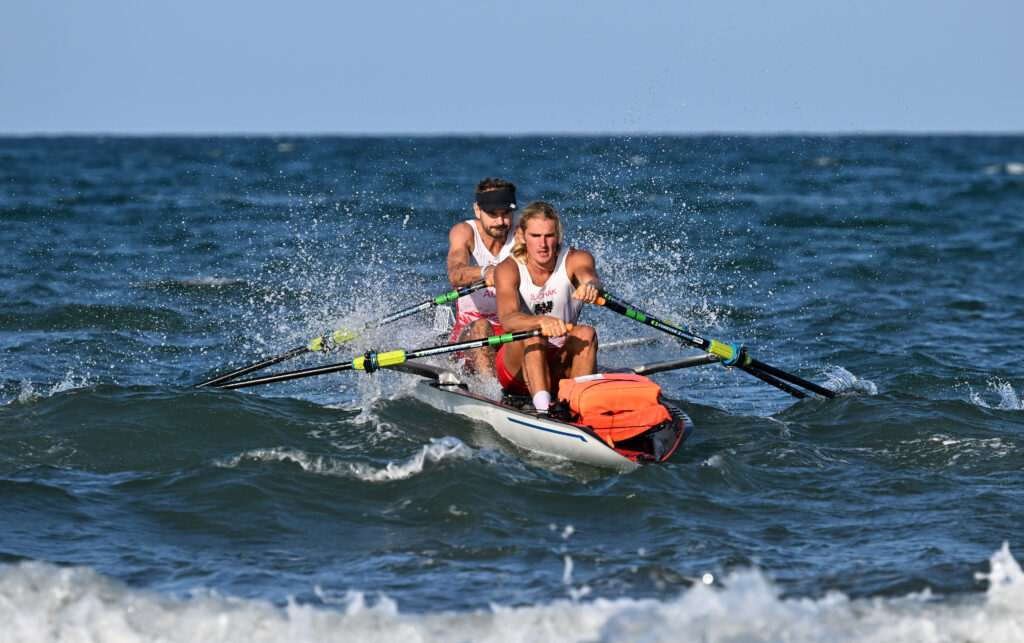
22 Nov 2023
Coastal rowing when you have no coast
With coastal rowing making its mark on the Olympic stage in the Los Angeles 2028 Olympic Games, you may think that regattas are naturally restricted to coastal countries. However, this is not the case at all. Two major regattas in the landlocked nations of Austria and Switzerland underscore the potential of coastal rowing in all sorts of venues!
Switzerland is an example of an ambitious agenda for coastal rowing. It is home to the Léman-sur-mer regatta, which started in 2021 as the first coastal regatta in the country, following a 6 km race around buoys on Lake Geneva. Fanny Mossière, part of the organising committee, says, “About 240 rowers from four countries (Switzerland, France, Italy, and Great Britain) have participated in Léman-sur-mer in 2023.”
Despite Switzerland being landlocked, the country’s landscape, characterised by strong winds from the picturesque mountains and the numerous large lakes, ironically proves conductive to coastal rowing because the conditions can make flatwater rowing difficult. Mossière notes, “In Lausanne, we cannot go on the lake with river boats about one day out of three. Coastal boats are, therefore, a perfect and safe alternative for rowers”.

Austria, another country without access to the sea, hosts the Bregenz regatta and organised by the local Wiking Bregenz club in October on Lake Constance at the border triangle with Germany and Switzerland. Similar to Léman-sur-mer, the windy conditions make it an ideal setting for coastal rowing with wider boats. Wolfgang Sigl, the Austrian Coastal coordinator, says, “The coastal variant of rowing, which has experienced an enormous increase in popularity in recent years, will no doubt also feed into the 2028 Olympic programme with its ‘Beach Sprint’ discipline.”
The Bregenz regatta format involves doubles in various categories, including mixed crews, with plenty of international entries. The route comprises of a 1.9 km long five-sided circuit, which must be circled twice. Sigl describes the double lap format as very spectator friendly, “It is very easy to see crews due to its proximity to the shore, and spectators can see for themselves the good work of the club.”
Coastal rowing introduces a new dynamic to the sport, attracting more fans and participants, including leisure rowers. Mossière says, “Coastal boats are also suited for longer tours, not only for racing, and this is still to be fully discovered by leisure rowers in the clubs. You can go around Lac Léman (Lake Geneva) for several days, for instance. The Léman is very long (72 km) and wide (14 km at the widest).” Sigl adds that the coastal “starting procedure, the manoeuvres at the turning buoys, all of this new stuff is a lot of fun for the participants.”
Naturally, rowing on a lake poses some differences compared to the sea or ocean. Mossière points out the waves, saying, “On a lake, waves are much more frequent than on the sea, which means that they are closer to one another, and it can be very intense to row on them. However, they can be just as high as on the sea.”
Both Mossière and Sigl agree that the inclusion of Beach Sprint Rowing in the Olympics will further develop the sport. Mossière expresses hope that more rowers worldwide will discover this different way of practising rowing, including longer 6 km regattas and not only Beach sprints. Sigle adds, “The coastal variant of rowing experienced an enormous increase in popularity in recent years and will continue to be popular when the Beach Sprint Rowing discipline is included in the Olympic programme.”
With both regattas backed by their respective national rowing federations and both sites optimistic about increasing interest, coastal rowing looks to have a bright future, even in landlocked nations, showcasing the versatility of this format.

